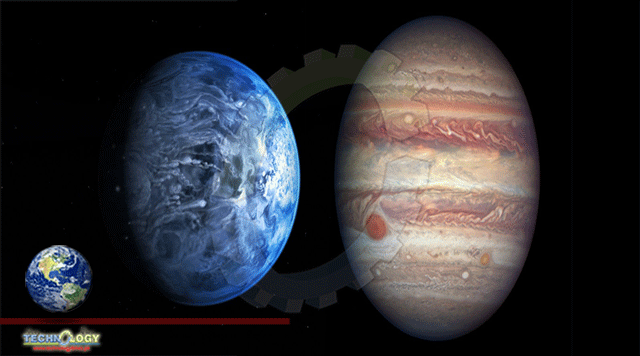When considering where to look for extraterrestrial life, astronomers have mostly stuck with what’s familiar. The best candidates for habitable zone is considered the ones most like Earth: small, rocky, with breathable atmospheres and a clement amount of warmth from their stars.

But as more planets outside the solar system have been discovered, astronomers have debated the usefulness of this definition (SN: 10/4/19). Some planets in the so-called habitable zone, where temperatures are right for liquid water, are probably not good for life at all. Others outside that designated area might be perfectly comfortable.
Now, two studies propose revising the concept of “habitable zone” to account for more of the planets that astronomers may encounter in the cosmos. One new definition brings more planets into the habitable fold; the other nudges some out.
“Both papers focus on questioning the classical idea of the habitable zone,” says astronomer Noah Tuchow of Penn State University. “We should extend the range of places that we look, so we don’t miss habitable planets.”
Some overlooked planets could be much bigger than Earth, and potentially receive no starlight at all. Astrophysicist Nikku Madhusudhan of the University of Cambridge and colleagues propose a new category of possibly habitable planet that could be found at almost any distance from any kind of star.
These hypothetical planets have a global liquid-water ocean nestled under a thick hydrogen-rich atmosphere (SN: 5/4/20). Madhusudhan calls them “Hycean” planets, for “hydrogen” and “ocean.” They could be up to 2.6 times the size of Earth and up to 10 times as massive, Madhusudhan and colleagues report August 25 in the Astrophysical Journal. That thick atmosphere could keep temperatures right for liquid water even with minimal input from a star, while the ocean could protect anything living from crushing atmospheric pressure.
“We want to expand beyond our fixated paradigm so far on Earthlike planets,” Madhusudhan says. “Everything we’ve learned about exoplanets so far is extremely diverse. Why restrict ourselves when it comes to life?”
In the search for alien life, Hycean planets would have several advantages over rocky planets in the habitable zone, the team says. Though it’s difficult to tell which worlds definitely have oceans and hydrogen atmospheres, there are many more known exoplanets in the mass and temperature ranges of Hycean planets than there are Earthlike planets. So the odds are good, Madhusudhan says.
And because they are generally larger and have more extended atmospheres than rocky planets, Hycean planets are easier to probe for biosignatures, molecular signs of life. Detectable biosignatures on Hycean planets could include rare molecules associated with life on Earth like dimethyl sulfide and carbonyl sulfide. These tend to be too low in concentration to detect in thin Earthlike atmospheres, but thicker Hycean atmospheres would show them more readily.
Best of all, existing or planned telescopes could detect those molecules within a few years, if they’re there. Madhusudhan already has plans to use NASA’s James Webb Space Telescope, due to launch later this year, to observe the water-rich planet K2 18b (SN: 9/11/19).
That planet’s habitability was debated when it was reported in 2019. Madhusudhan says 20 hours of observations with JWST should solve the debate.
“Best-case scenario, we’ll detect life on K2 18b,” he says, though “I’m not holding my breath over it.”
Astronomer Laura Kreidberg of the Max Planck Institute for Astronomy in Heidelberg, Germany, thinks it probably won’t be that easy. Planets in the Hycean size range tend to have cloudy or hazy atmospheres, making biosignatures more difficult to pick up.
It’s also not clear if Hycean planets actually exist in nature. “It is a really fun idea,” she says. “But is it just a fun idea, or does it match up with reality? I think we absolutely don’t know yet.”
Rather than inventing a new way to bring exoplanets into the habitable family, Tuchow and fellow Penn State astronomer Jason Wright are kicking some apparently habitable planets out. The pair realized that the region of clement temperatures around a star changes as the star evolves and changes brightness.
Some planets are born in the habitable zone and stay there their entire lives. But some, possibly most, are born outside their star’s habitable zone and enter it later, as the star ages. Tuchow and Wright suggest calling those worlds “belatedly habitable planets.”
When astronomers point their telescopes at a given star, the scientists are seeing only a snapshot of the star’s habitable zone, the pair say. “If you just look at a planet in the habitable zone in the present day, you have no idea how long it’s been there,” Tuchow says. It’s an open question whether planets that enter the habitable zone later in life can ever become habitable, he explains. If the planet started out too close to the star, it could have lost all its water to a greenhouse effect, like Venus did. Moving Venus to the position of Earth won’t give it its water back.
On the other end, a planet that was born farther from its star could be entirely covered in glaciers, which reflect sunlight. They may never melt, even when their stars brighten. Worse, their water could go straight from frozen to evaporated, a process known as sublimation. That scenario would leave the planet no time with even a cozy wet puddle for life to get started in.
These planets are “still in the habitable zone,” Tuchow says. “But it adds questions about whether or not being in the habitable zone actually means habitable.”
Originally Published By ScienceNews